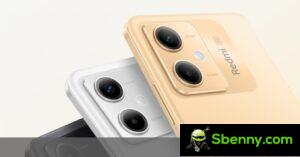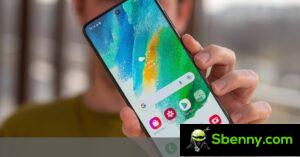At first, miniaturization was in fashion, but as smartphones took over, the need for a large screen prevailed over everything else. That’s how we ended up with tablet-sized giants. Remember the 2010 Dell series? It was marketed as a “tablet”, even though it had a 5 “screen. Nowadays, phones with 6.8” displays are quite common, only fractions of an inch away from the smallest tablets on the market.
You might think Sony was making cool mini phones. And it was, until a few years ago. Nowadays, Apple is the only one to make a small yet powerful phone. Samsung flirted with the idea not long ago, the Galaxy S10e was its smallest flagship in recent years.

But put performance aside for a moment: what’s the smallest smartphone you can buy? The answer is less and less deserving of the “small” qualification with each passing year.
We think the height and width of a phone are the most important measurements when it comes to handling and practicality. We have handpicked several famous brands and selected the smallest phones each year (looking at width * height as a measure of their smallness).
Here’s how the front surface of these small phones has changed over the years: the upward trend is unmistakable.

Manufacturers have some wiggle room as they can increase the display size by reducing the bezels. This only goes so far – the screen sizes of those smaller phones kept growing and growing, which inevitably made them bigger.

We know what you’re thinking: the diagonal of the screen doesn’t tell us much without knowing the aspect ratio. And that’s right, phones have gotten higher and higher. This is because they reach a limit on how wide they can be – around 70mm or so. This led to the end of the 16: 9 industry standard as the only way to grow was to increase.

Did they at least get thinner? Yes, they did, even though it bottomed out at around 8-9mm. As with the frames, there is only so much that you can shave. Note that the table below does not show the thinnest phone from each manufacturer, but it does show the thickness of the smallest phone.

Another consideration is the weight. This depends on the size, of course, but the materials also play an important role. It is clear that small phones have gotten significantly heavier over the years. Again, the graph shows the weight of our selection of smaller phones. But even if we only considered the lightest phones (ignoring other sizes), most smartphones don’t drop below 140-150g.

Of course, we were only looking at the big brands. We know there are some small smartphones out there, like the recent attempt to resurrect the Palm brand. That phone measures 96.6 x 50.6 x 7.4mm and weighs 62.5g. Now that’s properly tiny. Unfortunately it didn’t sell very well and the Palm brand is currently being used to sell TWS gems (oh how the mighty have fallen).
There are other small offerings out there, such as Unihertz’s Jelly phones. But if you look at traditional brands, “small” isn’t really an option. This isn’t a conspiracy, it’s just the result of consumer interest – or rather lack of it. Even the iPhone 12 mini and 13 mini were not selling well and at this point it is quite certain that Apple is ditching the form factor (perhaps until the next generation SE).


The new (and now discontinued) Palm phone • The Unihertz Jelly 2
Even if you go against market trends and grab a tiny phone, you’ll find that the lack of interest in those has side effects – some apps and websites don’t work well on tiny screens. Sometimes it’s just a case where the developer doesn’t bother testing on such rare devices, other times it’s because some apps and sites have gotten so complex that they can’t fit on a 4-inch screen.
You might even get a smartwatch at that point – those that can handle calls and music (you can pair with Bluetooth headsets), will let you read messages and even send short replies. There are also featurephones, of course.
But can you really live with the limited functionality provided by a smartwatch or feature phone? Maybe, but everyone else needs a smartphone. And that smartphone needs to manage the various apps and sites we use on a daily basis, which in turn places a lower limit on how small they can be.







Start a new Thread